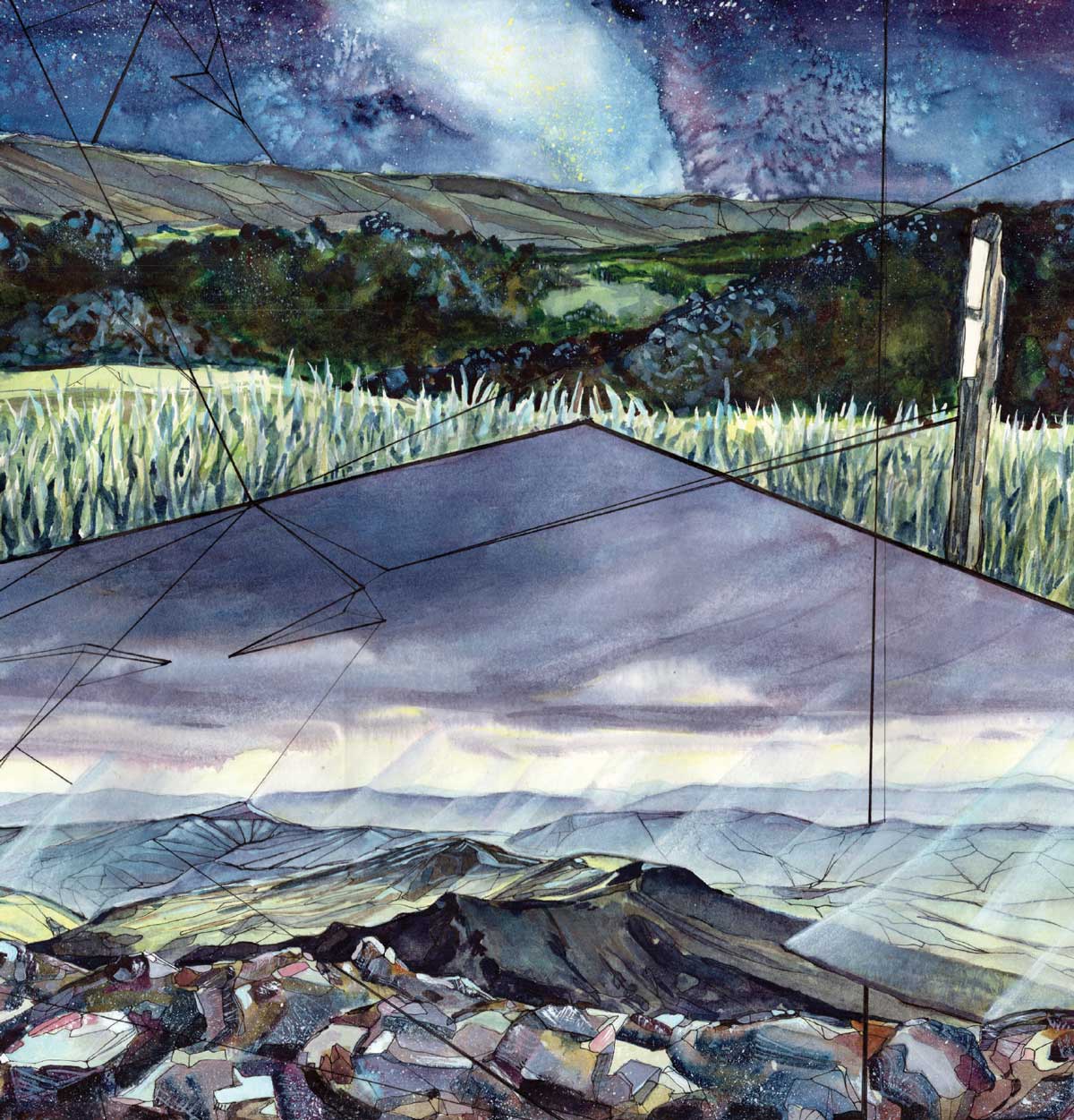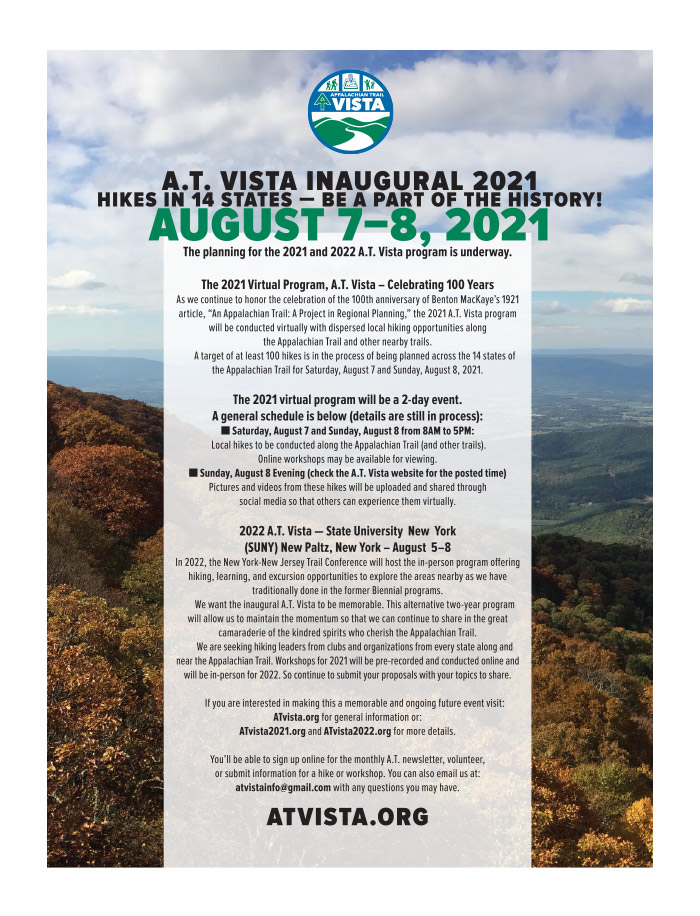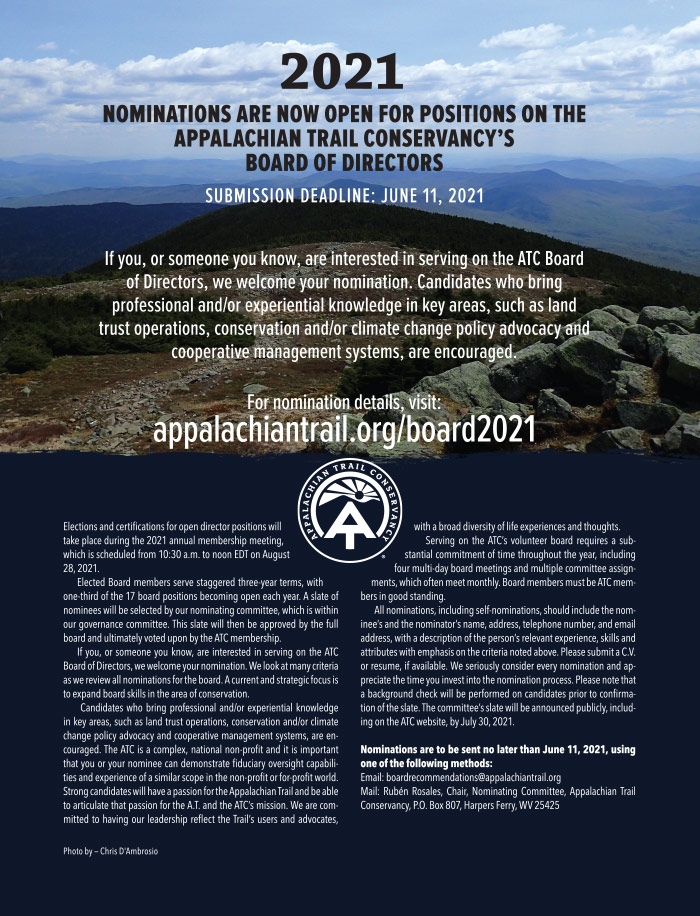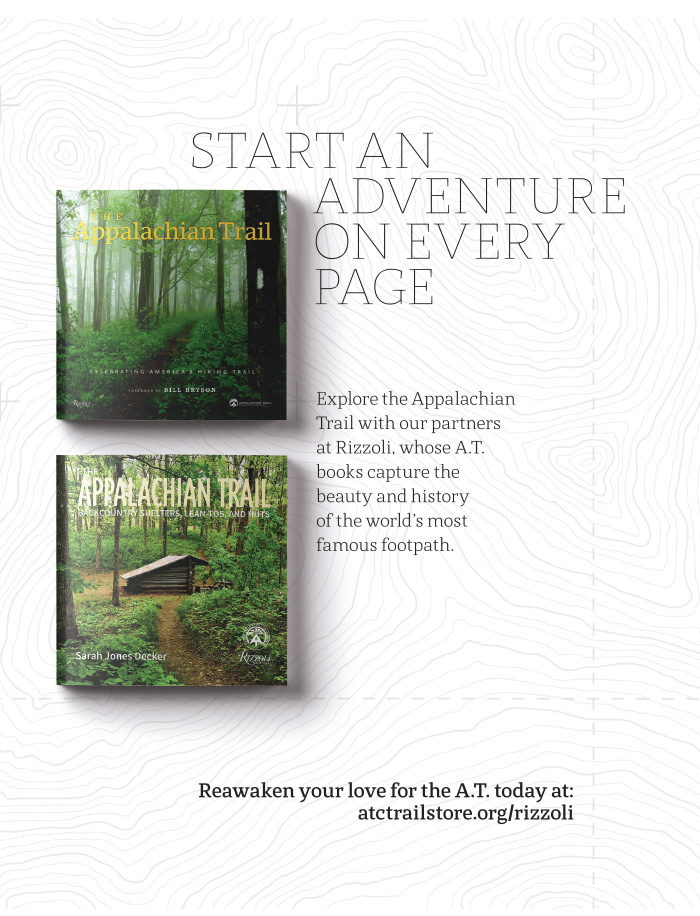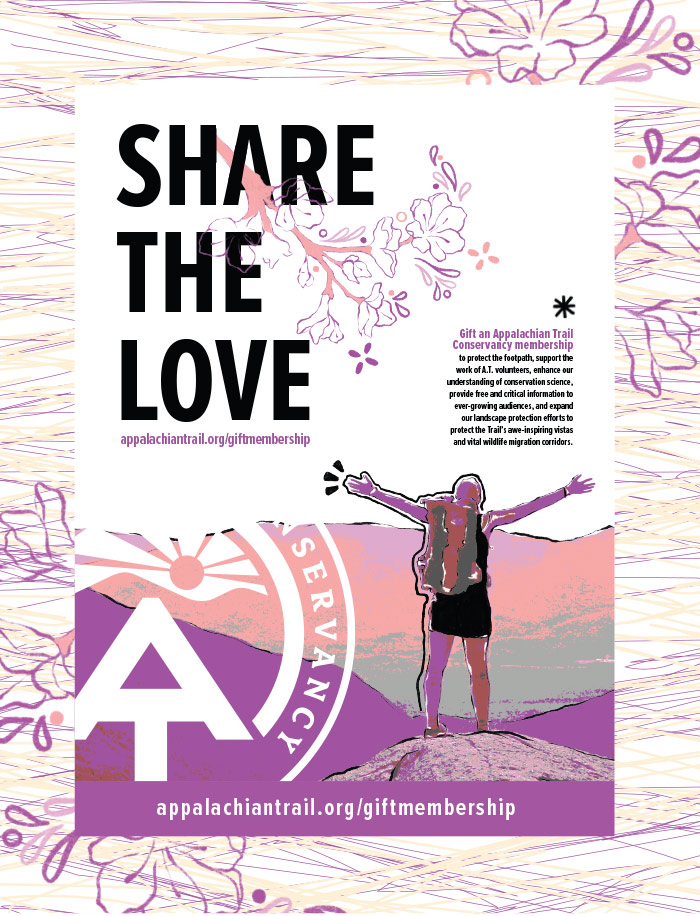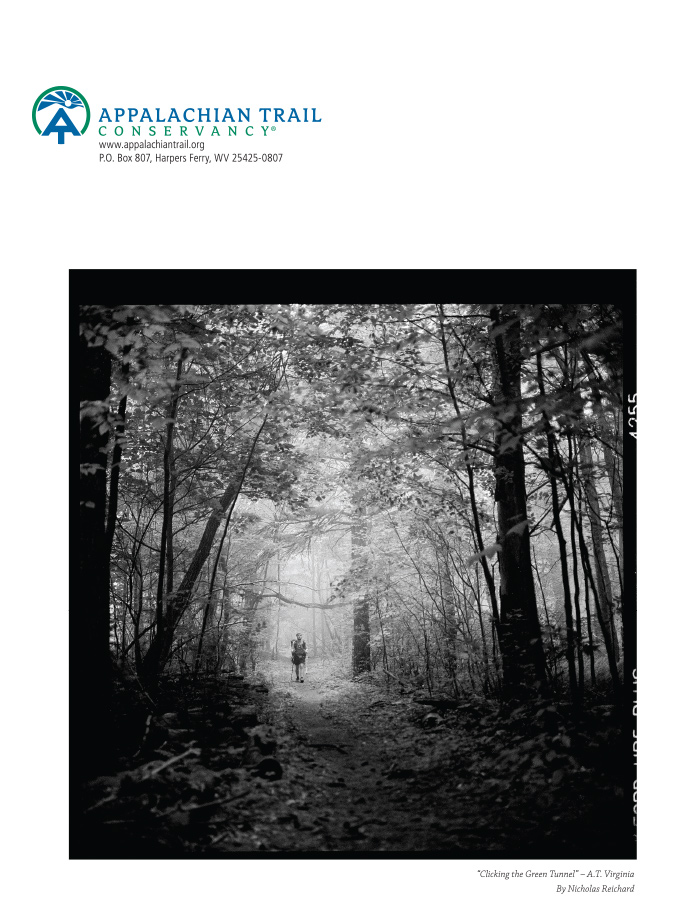ON THE COVER
“Time and Space” — By Nika Meyers. A dance through fields and across rocks. Inspired by the wild weather along the ridgelines in the White Mountains of New Hampshire combined with the deep peace of walking under the night sky in southern Virginia. – Watercolor, Gouache, and Ink on Paper

Sandra Marra / President & CEO
Nicole Prorock / Chief Financial Officer
Shalin Desai / Vice President of Advancement
Laura Belleville / Vice President of Conservation & Trail Programs
Cherie A. Nikosey / Vice President of Administration
Brian B. King / Publisher & Archivist
Wendy K. Probst / Editor in Chief
Traci Anfuso-Young / Art Director / Designer
Jordan Bowman / Director of Communications
Laurie Potteiger / Information Services Manager
Alyssa Reck / Social Media Manager
Brittany Jennings / Proofreader
The Appalachian Trail Conservancy’s mission is to protect, manage, and advocate for the Appalachian National Scenic Trail.
Colin Beasley / Chair
Robert Hutchinson / Vice Chair
Edward R. Guyot / Secretary
Jim LaTorre / Treasurer
Daniel A. Howe / Stewardship Council Chair
Grant Davies
Norman P. Findley
Thomas L. Gregg
John Knapp, Jr.
Ann Heilman Murphy
Colleen Peterson
Eboni Preston
Nathan G. Rogers
Rubén Rosales
Patricia D. Shannon
Rajinder (Raj) Singh
Ambreen Tariq
Hon. Stephanie Martz / Chair
Diana Christopulos
Jim Fetig
Lisa Koteen Gerchick
Mark Kent
R. Michael Leonard
Robert Rich
Hon. C. Stewart Verdery, Jr.
For membership questions or to become a member, call: (304) 885-0460
![]()
[email protected]
A.T. Journeys is published four times per year. Advertising revenues directly support the publication and production of the magazine, and help meet Appalachian Trail Conservancy objectives. For more information and advertising rates, visit: appalachiantrail.org/atjadvertising
MISSION
The Appalachian Trail Conservancy’s mission is to protect, manage, and advocate for the Appalachian National Scenic Trail.
Colin Beasley / Chair
Robert Hutchinson / Vice Chair
Edward R. Guyot / Secretary
Jim LaTorre / Treasurer
Daniel A. Howe / Stewardship Council Chair
Grant Davies
Norman P. Findley
Thomas L. Gregg
John Knapp, Jr.
Ann Heilman Murphy
Colleen Peterson
Eboni Preston
Nathan G. Rogers
Rubén Rosales
Patricia D. Shannon
Rajinder (Raj) Singh
Ambreen Tariq
Hon. Stephanie Martz / Chair
Diana Christopulos
Jim Fetig
Lisa Koteen Gerchick
Mark Kent
R. Michael Leonard
Robert Rich
Hon. C. Stewart Verdery, Jr.
A.T. Journeys is published on Somerset matte paper manufactured by Sappi North America mills and distributors that follow responsible forestry practices. It is printed with Soy Seal certified ink in the U.S.A. by Sheridan NH in Hanover, New Hampshire.
A.T. Journeys ( ISSN 1556-2751) is published by the Appalachian Trail Conservancy, 799 Washington Street, Harpers Ferry, WV 25425, (304) 535-6331. Bulk-rate postage paid at Harpers Ferry, West Virginia, and other offices. Postmaster: Send change-of-address Form 3575 to A.T. Journeys, P.O. Box 807, Harpers Ferry, WV 25425.
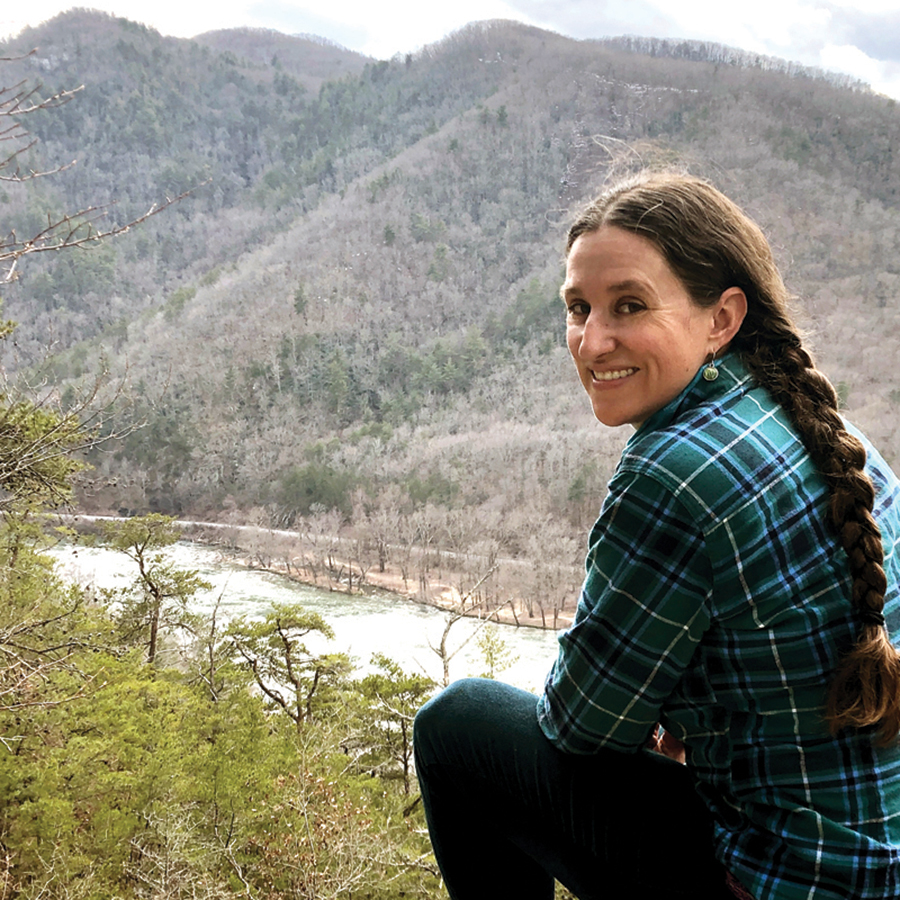
Sarah Jones Decker lives on her family farm outside of Hot Springs, North Carolina and is a trail maintainer for the Carolina Mountain Club. She thru-hiked the A.T. in 2008 and again in sections in 2018-2019, for her book The Appalachian Trail: Backcountry Shelters, Lean-tos and Huts, documenting every shelter on the Trail. Her new book, coming out this summer, The Ridges of Madison County, explores local trails and one of her favorite sections of the A.T. that runs the border of her county — Max Patch to Big Bald. The Trail has influenced her creative work for over twenty years, starting back in high school when she would hike up to Bears Den to watch the sunset and practice photography after class. “As an artist, and hiker living near the Trail, it is an honor to enjoy the places that George Masa (page 24) and so many before him, helped to preserve for us and future generations,” she says. “Thankfully, my camera and tripod only weigh a few extra pounds on day hikes.”
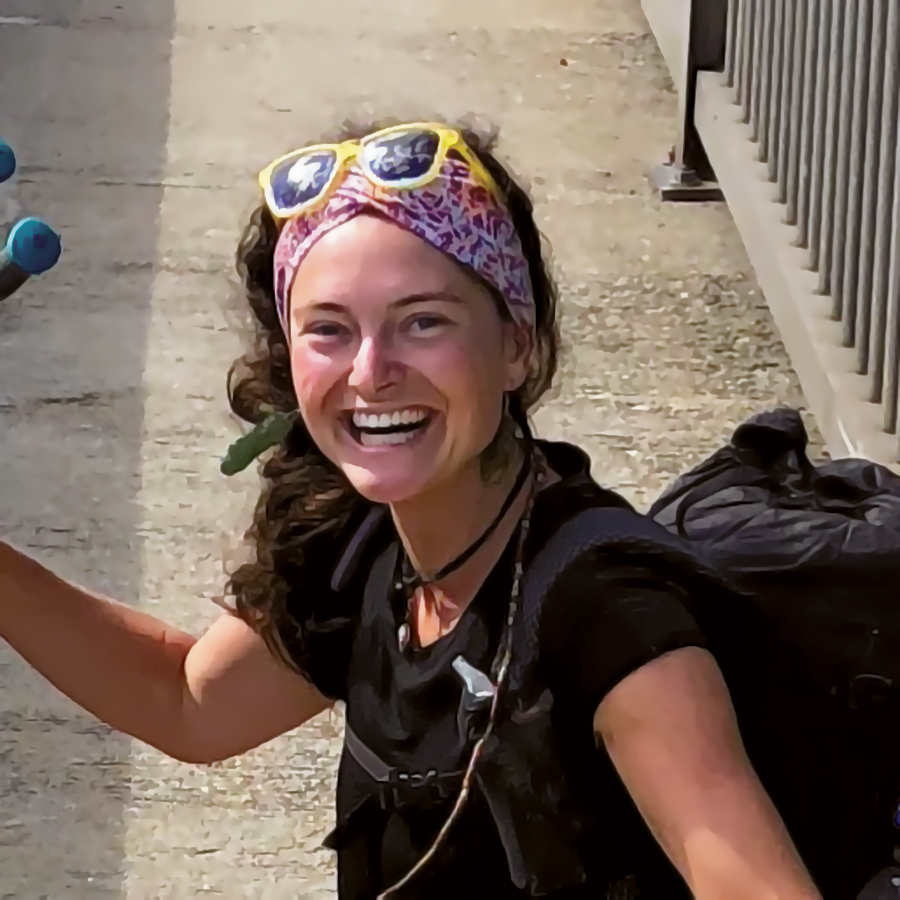
Wild and rugged landscapes have become more of a home than any space with four walls to Bridgewater, Vermont native and artist Nika “Early Bird” Meyers. “Moving at a three-mile-an-hour pace is where I find the most peace,” she says. “To walk among the wild things, to take time to really see and not just look, and to create pieces that celebrate raw beauty are part of who I am. Imagination, curiosity, migrations, physical and mental challenge, wild places, trails, and the interconnectedness of this world inspire me to dream big.”
Nika currently lives in Colorado, where, in addition to creating paintings, she is an environmental educator and Nordic ski coach. “When I think of the Trail experience, one of the first things I think about are the tracks that are made in sand, mud, or snow,” she says. “They are representative of friends and other hikers ahead — our human animal tracks. The little triangles that my walking shoes leave behind are embedded in my Trail memories. They find their way into my paintings.” (page 38)
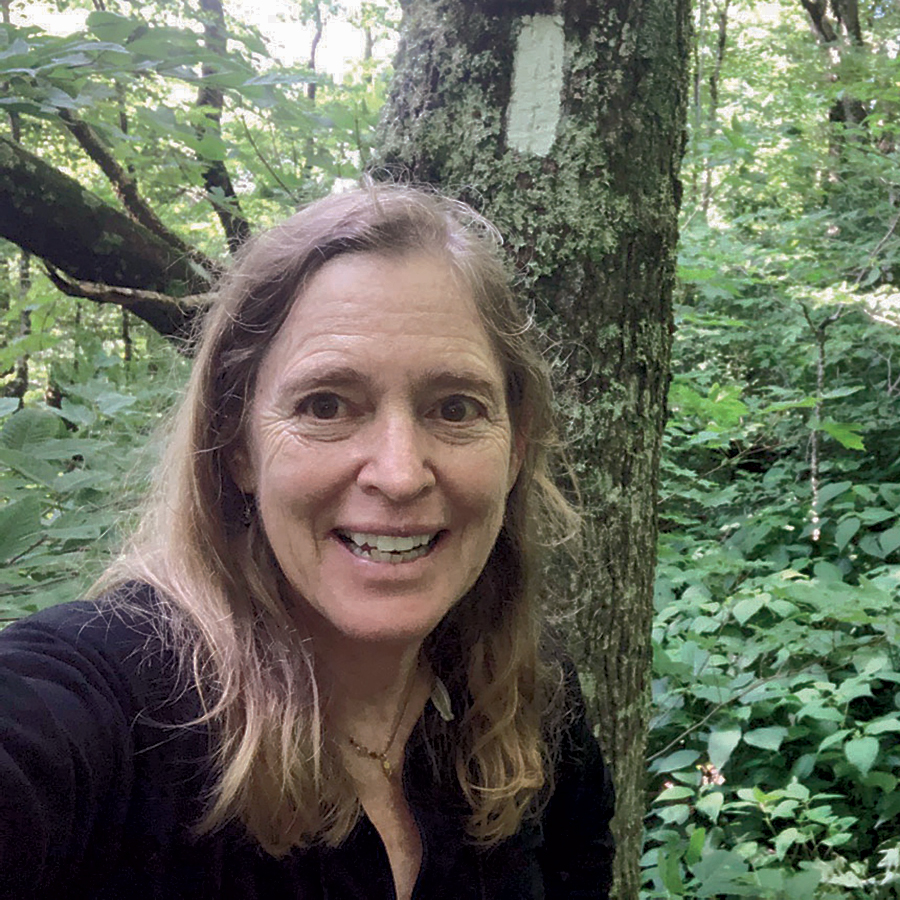
Nature writer Marina Richie is happiest on trails leading away from the noise of cars and into the symphonies of bird song. She says that to write about the nature of beauty on the Appalachian Trail (page 14) felt like an “invitation to delve more deeply into joy.” “On every trail near my home, I strived to be as sensory as possible, asking myself: What glimmers? What draws me in? I began to notice a rhythm that would become the theme for the essay,” she says. To apply the question to the A.T., she turned to her journals and quizzed former A.T. thru-hikers Renee Patrick and Liz Thomas. Residing in Bend, Oregon, Marina’s ties to the Trail run deep as the daughter of Dave Richie (the first A.T. project manager for the National Park Service). She is a frequent feature contributor to A.T. Journeys and recently published the article “Big Bald Banding Station Releases Hope into the World” for BirdWatching.
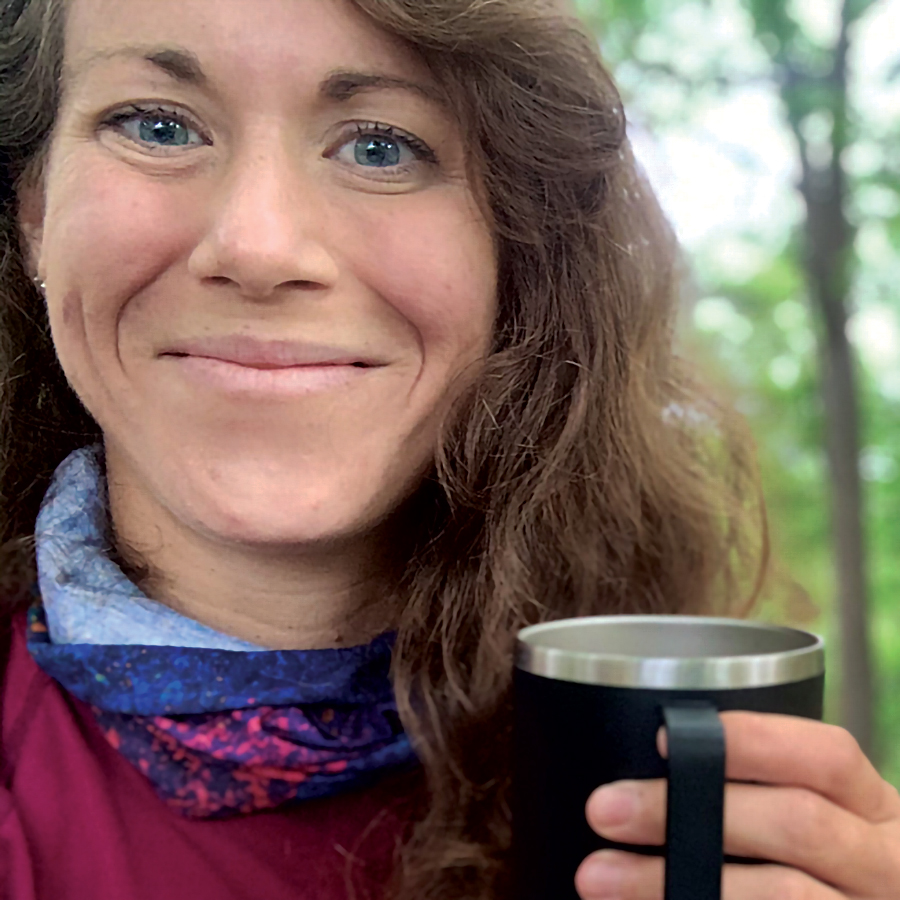
From the very first footprint she made on the Appalachian Trail, Jenny Siegfried knew her life had profoundly shifted. “I was a total city girl, and yet there I was, hiking along the A.T. in the Great Smoky Mountains National Park as a new member of the ATC’s Rocky Top Trail Crew,” she says. “Looking out on the mountain peaks at sunrise and gazing at the Milky Way every night was deeply transformative; I was growing into myself more fully with every deep breath of mountain air.” Since that trip, the trails and mountains have become her favorite place to find a moment of calm and inspiration. “Painting and sketching on the Trail forces me to slow down and pause, to watch the light shift and the colors change,” she says. (page 60)
Jenny is a visual arts teacher in New York City for students diagnosed on the autism spectrum. Her favorite small artists fill every day with creativity and joy. “When the school day is over, I love to run in Prospect Park or hike in the Hudson Valley,” she says. “Always with my mini-paint set and sketchbook in my pocket.”
This is not to say that I do not artistically express myself. My cooking has been described as artful; and I have at least a modicum of talent in stringing words together so that they sometimes go beyond sharing information to eliciting an emotional reaction from the reader. But possessing true artistic talent, such as Rebecca Harnish, Mike Wurman, and George Rue who create art through paint, pen, and photography, is a skill that will not be mentioned in my epitaph.
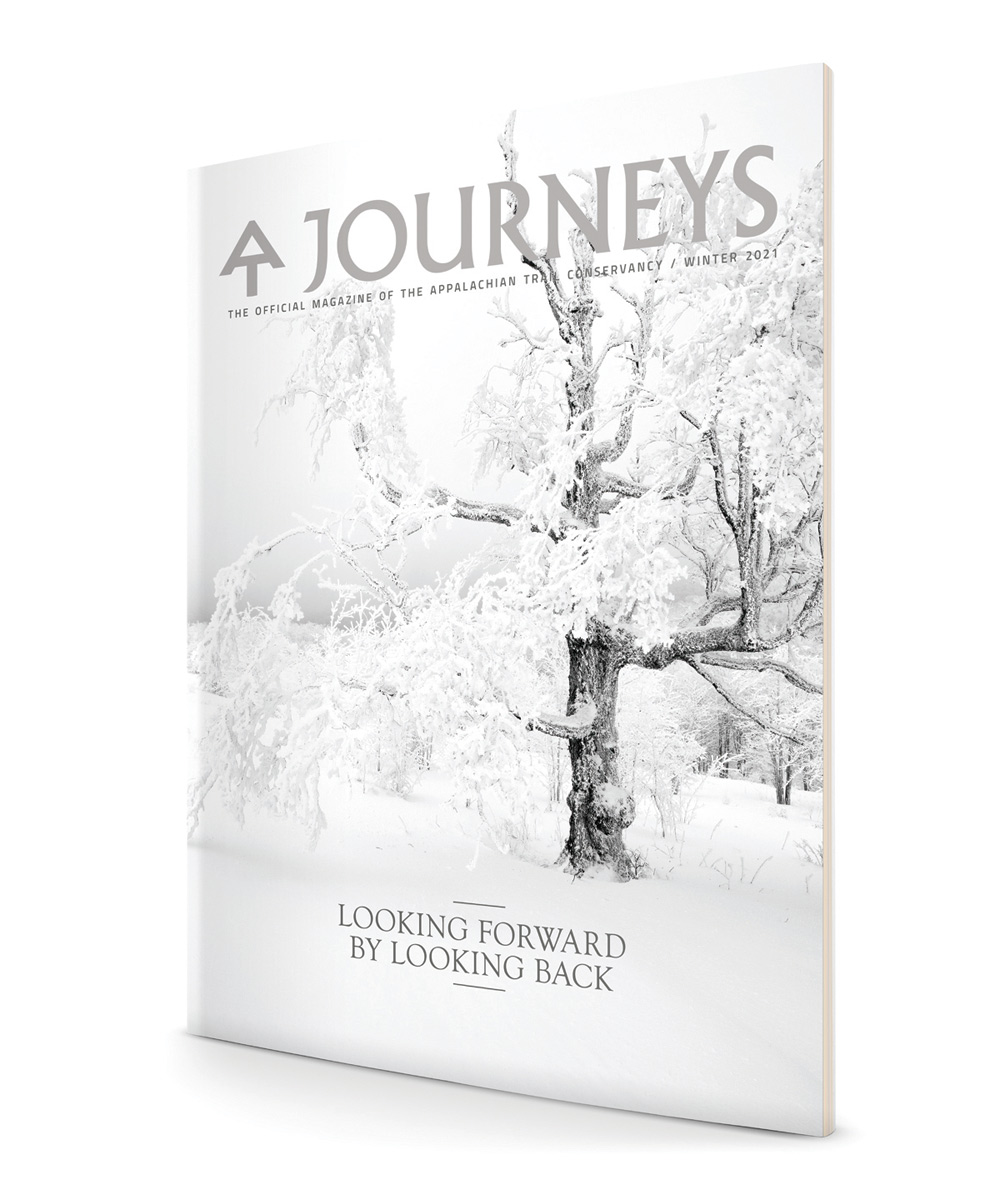
Montpelier, Vermont
Hardwick, Georgia
Above, sunlight frisks through emerald layers. Each illuminated leaf reveals a singular pattern and a defining tree name—tulip poplar, basswood, sugar maple, horse chestnut, cherry, or ash.
Within this North Carolina June fecundity, I breathe in the exhalation of oxygen from the photosynthesizing forests. I thank the great trees for sweeping our excess carbon from the air. I hold up my hands, spread my fingers like leaves, gather the sun’s energy, and take the first step. I am contemplative, reflective. A newt, as radiant as the rising sun slips beneath a decaying log that yields new life. Every visible root on the Trail snakes downward into the soil, where trees are conversing and aiding one another through an interlacing network of soil fungi.
Beauty Spot, Cherokee National Forest, Tennessee/North Carolina
By Jerry Greer
Beauty Spot, Cherokee National Forest, Tennessee/North Carolina
By Jerry Greer
Above, sunlight frisks through emerald layers. Each illuminated leaf reveals a singular pattern and a defining tree name—tulip poplar, basswood, sugar maple, horse chestnut, cherry, or ash.
Within this North Carolina June fecundity, I breathe in the exhalation of oxygen from the photosynthesizing forests. I thank the great trees for sweeping our excess carbon from the air. I hold up my hands, spread my fingers like leaves, gather the sun’s energy, and take the first step. I am contemplative, reflective. A newt, as radiant as the rising sun slips beneath a decaying log that yields new life. Every visible root on the Trail snakes downward into the soil, where trees are conversing and aiding one another through an interlacing network of soil fungi.
Crawford Notch, White Mountains, New Hampshire — By Frederic Marlett Bell-Smith 19th century watercolor
Courtesy of the White Mountain Art & Artists
 A little more than a century ago, a handful both fledgling and experienced artists trekked to the mountain peaks of New Hampshire’s White Mountains with their paints and canvas to capture some of the most stunning views in New England. The result is a collection of work that was inspired by the landscape and served to inspire others to protect it. In many cases, that natural scenery looks substantially different today. The Appalachian Trail Conservancy’s (ATC) Visual Resource Inventory tries to capture that change and, in some cases, protect the views that have become iconic along the A.T. Many understand scenery as something we connect to on a visceral level, and that this connection is so instinctual that it precludes quantification and categorization. What we know (and landscape architects around the world would agree) is that there is a certain science to appealing scenery. We can capture it in words, and art, and in some regards, quantify it too. For the first time, the ATC is putting significant resources behind an effort called the Visual Resource Inventory. Through this process, we frame visual resources as one of the many natural resources of the A.T.
A little more than a century ago, a handful both fledgling and experienced artists trekked to the mountain peaks of New Hampshire’s White Mountains with their paints and canvas to capture some of the most stunning views in New England. The result is a collection of work that was inspired by the landscape and served to inspire others to protect it. In many cases, that natural scenery looks substantially different today. The Appalachian Trail Conservancy’s (ATC) Visual Resource Inventory tries to capture that change and, in some cases, protect the views that have become iconic along the A.T. Many understand scenery as something we connect to on a visceral level, and that this connection is so instinctual that it precludes quantification and categorization. What we know (and landscape architects around the world would agree) is that there is a certain science to appealing scenery. We can capture it in words, and art, and in some regards, quantify it too. For the first time, the ATC is putting significant resources behind an effort called the Visual Resource Inventory. Through this process, we frame visual resources as one of the many natural resources of the A.T.
So many of us are inspired by what we consider “pristine” landscapes. However, not all views derive their worth from being unspoiled by human change and development. Using categories developed by the National Park Service in their “Enjoy the View” process, each view should be taken within the context of its specific setting. While many of us cherish those entirely natural views, we can also acknowledge that there are a host of other beautiful scenes along the A.T., including rolling farmland in Pennsylvania and quaint townscapes in New England.
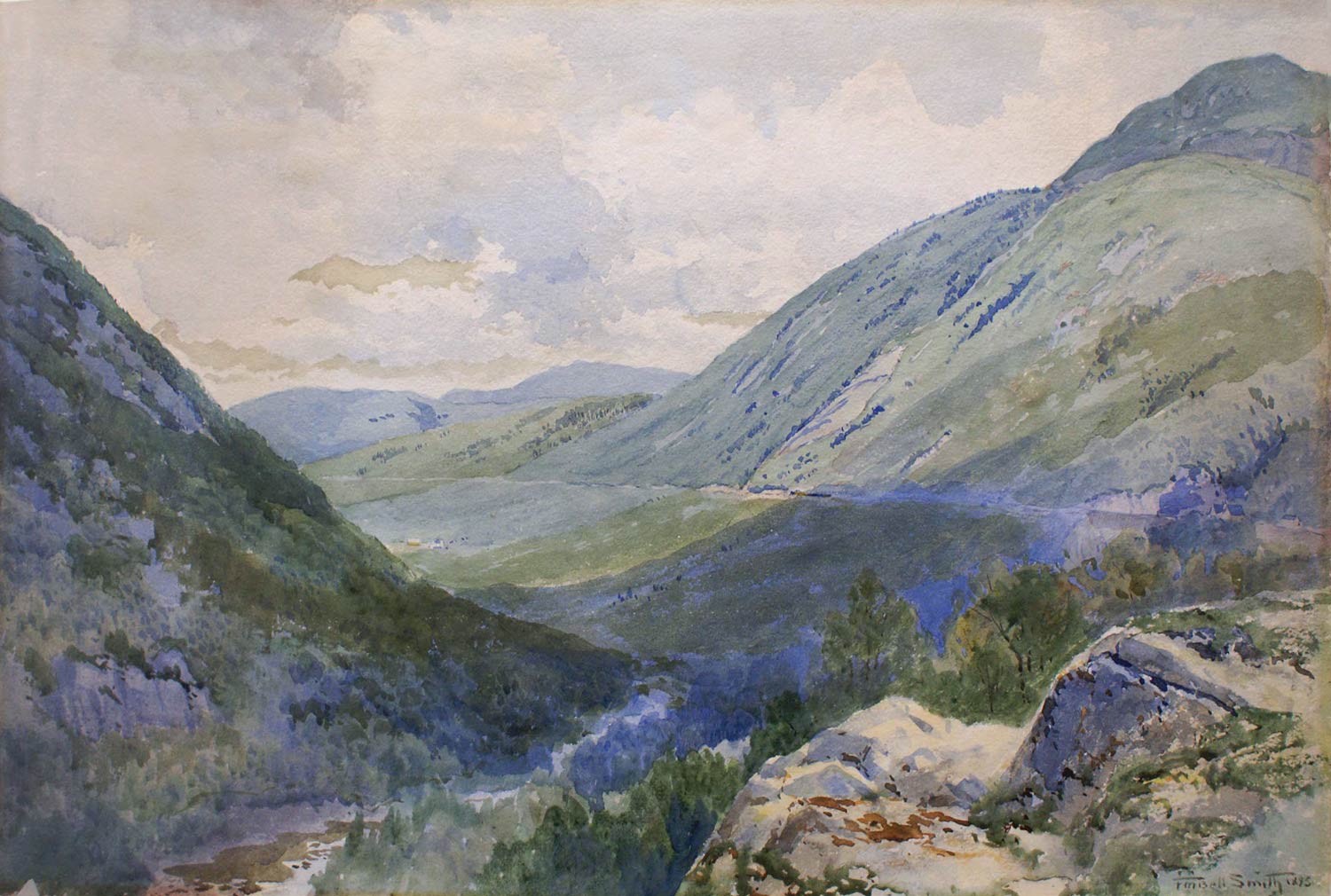
 A little more than a century ago, a handful both fledgling and experienced artists trekked to the mountain peaks of New Hampshire’s White Mountains with their paints and canvas to capture some of the most stunning views in New England. The result is a collection of work that was inspired by the landscape and served to inspire others to protect it. In many cases, that natural scenery looks substantially different today. The Appalachian Trail Conservancy’s (ATC) Visual Resource Inventory tries to capture that change and, in some cases, protect the views that have become iconic along the A.T. Many understand scenery as something we connect to on a visceral level, and that this connection is so instinctual that it precludes quantification and categorization. What we know (and landscape architects around the world would agree) is that there is a certain science to appealing scenery. We can capture it in words, and art, and in some regards, quantify it too. For the first time, the ATC is putting significant resources behind an effort called the Visual Resource Inventory. Through this process, we frame visual resources as one of the many natural resources of the A.T.
A little more than a century ago, a handful both fledgling and experienced artists trekked to the mountain peaks of New Hampshire’s White Mountains with their paints and canvas to capture some of the most stunning views in New England. The result is a collection of work that was inspired by the landscape and served to inspire others to protect it. In many cases, that natural scenery looks substantially different today. The Appalachian Trail Conservancy’s (ATC) Visual Resource Inventory tries to capture that change and, in some cases, protect the views that have become iconic along the A.T. Many understand scenery as something we connect to on a visceral level, and that this connection is so instinctual that it precludes quantification and categorization. What we know (and landscape architects around the world would agree) is that there is a certain science to appealing scenery. We can capture it in words, and art, and in some regards, quantify it too. For the first time, the ATC is putting significant resources behind an effort called the Visual Resource Inventory. Through this process, we frame visual resources as one of the many natural resources of the A.T.
So many of us are inspired by what we consider “pristine” landscapes. However, not all views derive their worth from being unspoiled by human change and development. Using categories developed by the National Park Service in their “Enjoy the View” process, each view should be taken within the context of its specific setting. While many of us cherish those entirely natural views, we can also acknowledge that there are a host of other beautiful scenes along the A.T., including rolling farmland in Pennsylvania and quaint townscapes in New England.
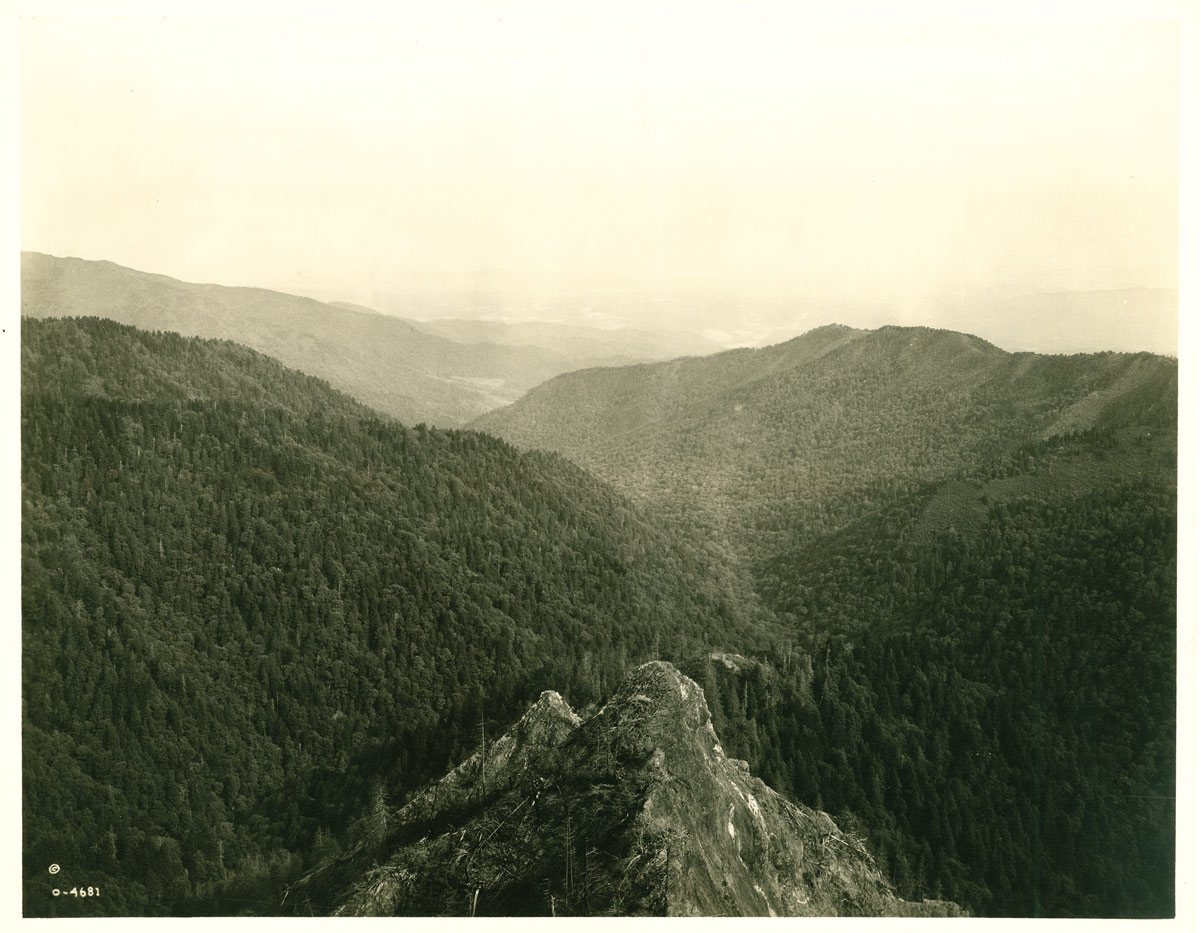

The View from Charlies Bunion (formerly called Fodderstack) on the A.T. — Smokies. While cataloging peaks, and the distance between them, Masa was careful to use the names given to them by the local settlers and the local Cherokee Tribes.
Courtesy of the Pack Memorial Library, Asheville, North Carolina
Legacy

SOLDIERS FROM THE U.S. ARMY’S 5TH RANGER TRAINING BATTALION AT CAMP FRANK D. MERRILL ASSIST IN VOLUNTEER TRAIL WORK — HAWK MOUNTAIN, GEORGIA — THE PHOTO WAS PART OF THE “UNITED BY THE APPALACHIAN TRAIL” EXHIBIT
By Rebecca Bruce Vaughters
The Trail not only inspires endlessly, it also unites us in ways unimagined. Aptly titled “United by the Appalachian Trail,” the photographic exhibition that made its way to the Capitol Rotunda in 2018 imparted a sense of the Trail as not only a place to find beauty and inspiration, but where we all come together, united by this remarkable project we call the Appalachian Trail.
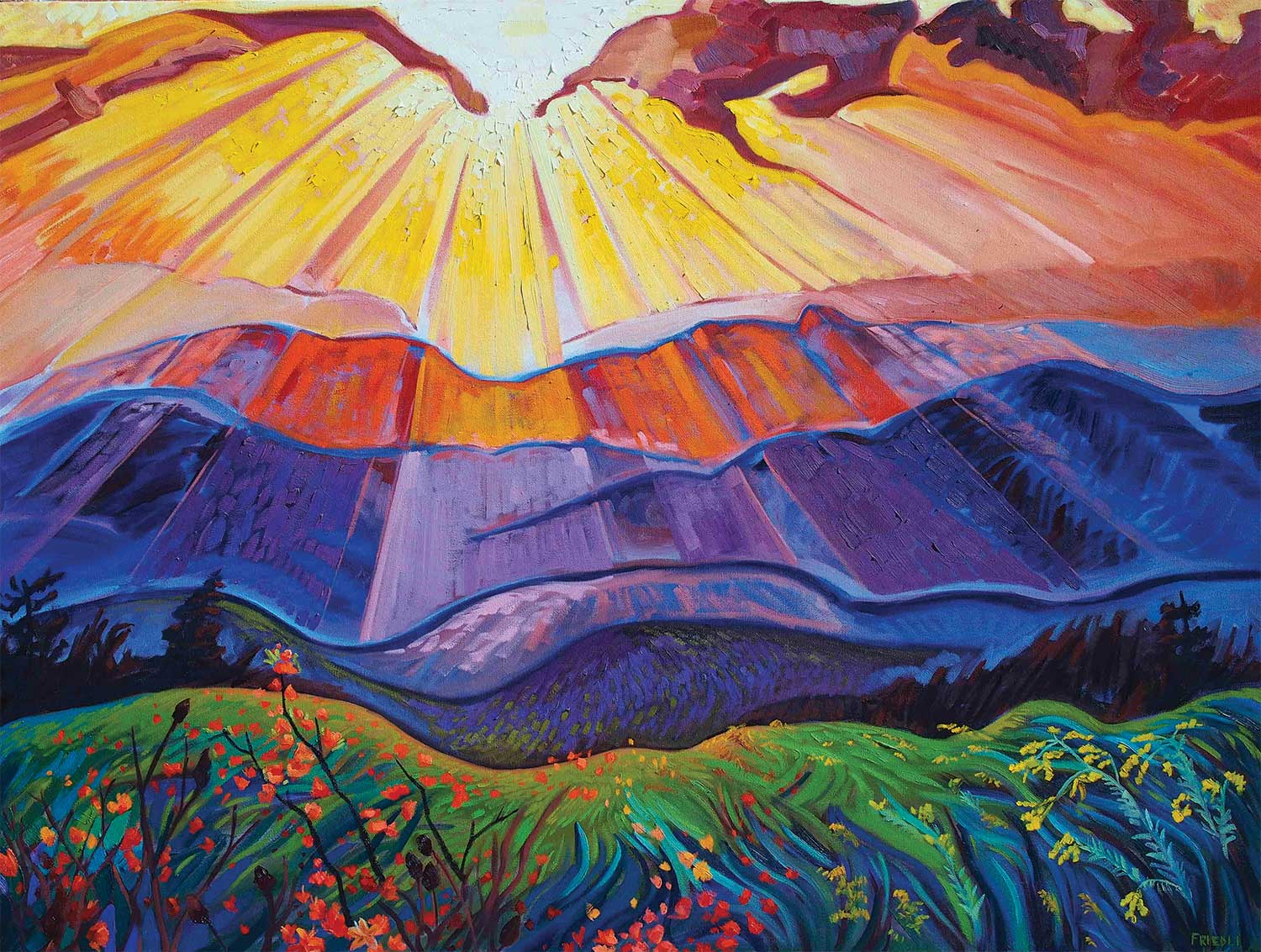
Oil on Canvass
By Heather Friedli


